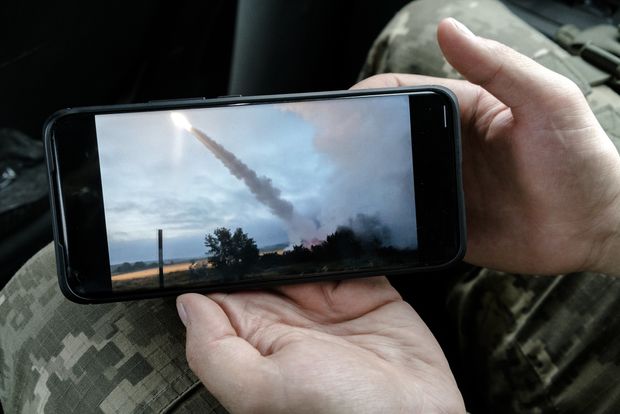Repair HIMARS via messenger: AFU reconstructs equipment right on the battlefield with the help of secret chats with foreign specialists - WSJ

After seven months of war, the U.S. and allied Western countries providing weapons and other support to Ukraine have discovered that it is not enough to give Kiev weapons. The Ukrainian military also needs to be provided with spare parts and access to specialists who can help repair equipment or make parts. To do this, they have created secret chat rooms where Ukrainian fighters consult with foreign specialists and repair equipment right on the battlefield.
Details
The Wall Street Journal story says journalists visited a military base in Poland, not far from the border with Ukraine. There is a group of 55 U.S. soldiers and interpreters working there, answering questions from Ukrainian fighters on iPads via a secure chat room. There are 14 chats for each major weapon system, forming an improvised wartime remote service network.
The chats began informally after the first 9 Ukrainian servicemen, who had been trained to keep their weapons operational, returned to Ukraine and began asking their teachers for advice via text messages. By June, the U.S. military had codified the chats.
For example, Ukrainians can send photos of guns worn down by repeated firing, videos of weapons in need of repair. They can also send sketches showing how they reconstructed a part that would have taken too long to deliver from an allied partner, and ask if it would work even if the part created is not perfect.

Earlier this month, the U.S. said all 16 HIMARS transferred to Ukraine were in working order. Among other things, thanks to consultations with U.S. experts in chat rooms: some damaged HIMARS were repaired right on the battlefield, although otherwise they would have gone out of commission. The publication recounts another case: during a recent firing, the advanced weapons system computer issued an error message, and the Ukrainian fighters did not know how to fix it. An army lieutenant initiated a video chat with a U.S. instructor, who then used Google Translate to send instructions in Ukrainian.
Through the chats, Americans also learn how much wear and tear a weapon can withstand. This information is fed back to defense weapons manufacturers, in some cases to determine which parts to produce faster.
Of the 14 chats, those that support maintenance of HIMARS and howitzers are prioritized. About 650 requests have already been received: a response is usually given within minutes, and if parts are needed for repairs, they are usually delivered by airplane from the airfield within 24 hours. But even this is not enough, and the supply of many parts cannot meet demand. In response, the Ukrainians have set up their own production systems.
"This war requires quick and nonstandard solutions. It gives a perfect opportunity to ensure permanent maintenance and combat-ready state of armaments and military equipment"," said Ukrainian Defense Minister Alexei Reznikov. According to him, Ukraine started to carry out complex repair of western armament and has mastered the production of about 10% of necessary spare parts, sometimes even without technical documentation. In fact, countries often donate armaments but do not provide the accompanying manuals, partly to protect proprietary information. Instead, parts of the manuals come in the form of chat messages. With the outbreak of war, Ukrainian repair and maintenance specialists received accelerated training from Western allies and are now passing that knowledge on to their colleagues.
Journalists were not allowed to name the troops in charge of the remote service networks, the type of application used for the chats, or where the U.S. military, which supports the chats, is based in Poland.
Source: The Wall Street Journal